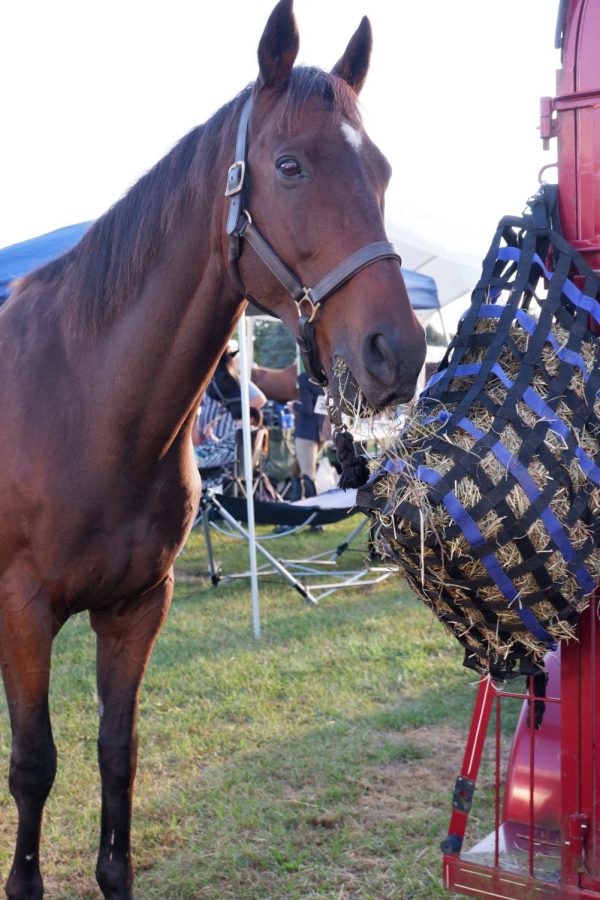Arcus, an equine competitor, takes a snack break to regain his strength between events.
The neigh-ked truth : Equestrian’s unique challenges
Equestrian presents a number of unique challenges to team members.
Novi riders meet at Milford High School where they have only three or four meets each season, which usually last from 8 a.m. to 6 p.m. Meets may run from 8 to 12 hours, depending on a teammate’s responsibilities – a team captain may arrive at 6 a.m. and stay until 6 p.m. Riders have a finite number of opportunities to present their work to judges.
Riders regularly interact with an eight foot long, 900 pound animal. The precision and safety that equestrian requires is unlike that of any other sport.
“You’re controlling an animal that can weigh upwards of a ton with your thighs and two fingers essentially and it’s very complicated,” equestrian team co-captain Molly Hearsch said.
“Their brains are actually four inches in diameter, the size of a large walnut, and you’re trying to communicate with them enough that you can get this prey animal to do what you want even in situations that they may find scary.”
Riders work alone during competitions, rather than with teammates.
“With equestrian you have to rely on just yourself and your horse and trust you know what you’re doing, which can be difficult,” Hearsch said.
Despite the difficulties it brings, riders are often still passionate about their sport.
“Horseback riding is just something that brings me so much joy and it’s something that I can always be improving upon,” Hearsch said. “It’s really important to me, it’s a huge part of who I am and who I’m becoming.”
Gall-op-ery
There are multiple events that riders can participate in. The differences between events are determined based on style, dress, saddle position, and other factors. Learn more here:
Dressage: A discipline that tests a horse’s movement, grace and calmness. Riders are ranked based on the horse’s willingness to perform without fighting back or coercion from the rider.
Endurance: A discipline that tests a horse’s fitness and stamina. Horses run cross country tracks and must avoid obstacles. Time limits and weight divisions are used to make competitions fair. Riders are ranked based on speed and condition on crossing the finish line.
Jumping: A discipline that tests a rider’s ability to coordinate with their horse to clear obstacles. Multiple types of obstacles are used. Riders are ranked based on number of penalties and speed.
Take A Ride
Aspiring riders must meet a number of requirements, such as:
- Must have their own horse
- Must be able to transport the horse
- Must have experience with horses
Riders will be judged on their ability to perform safely before being allowed to join the team.
